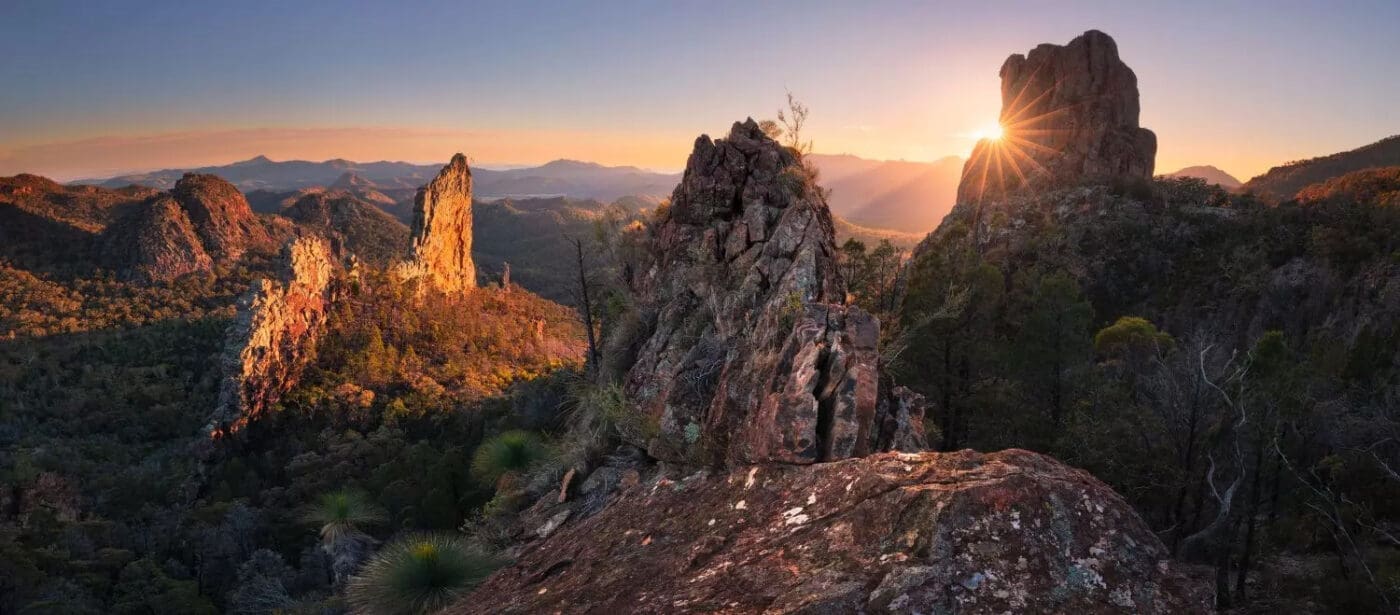Kiama Blowhole and the Coastal Wonders of Kiama
Kiama, located on the coast of New South Wales, is a destination that encapsulates the essence of Australia’s natural beauty. Known for its incredible coastline, carved by ancient volcanic lava flows, Kiama is home to the world-famous Kiama Blowhole. The town and surrounding region offer a blend of coastal adventures, cultural experiences, and nature’s artistry.
The Kiama Coast Walk
The Kiama Coast Walk is a 20km trail that offers an easy to moderate hike, broken into three sections of approximately 5-8km each. It’s a journey along the dramatic coastline, unveiling scenic views, hidden beaches, and of course, the star attraction—the Kiama Blowhole.
Kiama Blowhole: A Force of Nature
The Kiama Blowhole is nature’s grand spectacle and is the largest blowhole in the world. Under the right conditions, especially with a big south-easterly swell, the blowhole can shoot water plumes over 30 meters high through its 2.5-meter opening. It’s a sight that leaves visitors impressed, sometimes even drenched, depending on the viewpoint!
This natural wonder has attracted people for over 100 years, with the first recorded sighting by George Bass in 1797. It is estimated to draw 900,000 visitors each year, making it one of the must-visit Australian natural landmarks.
Facilities and Accessibility
The Kiama Blowhole area is well-equipped with picnic and parking areas, public toilets, and a café near the Kiama Visitor Information Centre. Multiple viewing platforms provide different perspectives of this incredible phenomenon, and a nearby rock pool adds to the coastal charm.
Surrounding Attractions: Towns and Villages
The town of Kiama is the largest in the area, flanked by beautiful beaches and ocean pools. Nearby villages like Gerringong, Gerroa, and Jamberoo offer additional attractions and unique local experiences.
Markets and Festivals
Kiama’s vibrant community is reflected in its numerous markets and festivals. From the Kiama Farmers’ Market to the Winter Wine Festival and Kiama Jazz and Blues Festival, the region is alive with cultural celebrations.
Rock Formations and Water Adventures
The rock formations at Bombo Headland, a product of the region’s rich mining history, are another must-see. Surfers, paddleboarders, and kayakers will find plenty of spots to explore, including renowned beaches like Bombo, Werri, and Seven Mile Beach. Deep-sea fishing expeditions are also popular in the area.
Rainforest Adventures
A short distance from the coast, Minnamurra Rainforest offers a world of waterfalls, walking trails, and lush greenery. The Illawarra Fly Treetop Adventures provide thrilling experiences like ziplines and suspension bridges, while Jamberoo Action Park offers family-friendly water fun.
Walking Trails and Outdoor Activities
The Kiama Coast Walk is just one of many trails in the area. Others, like The Falls walk to Minnamurra Falls or the trail to Illawarra lookout, offer spectacular views and nature experiences. Golf enthusiasts will find scenic courses at Kiama Golf Club, Gerringong Golf Club, and Jamberoo Golf Club.
Getting There
Kiama is a 120km or two-hour journey south from Sydney on the Grand Pacific Drive. The drive itself is exhilarating, with views of national parks and the thrilling Sea Cliff Bridge. Public transport, including scenic train trips and buses, is available, as well as flights to nearby Shellharbour.
Accommodation
Click here to find Accommodation in the area
Kiama – A Blend of Coastal Beauty and Cultural Richness
Kiama and its iconic blowhole stand as a testament to the raw power and beauty of nature. It’s not just a destination; it’s an experience that embodies the spirit of coastal Australia.
From the mesmerizing force of the Kiama Blowhole to the tranquil beauty of the rainforests, the lively local markets, and the adventure-filled water activities, Kiama offers something for every traveler. It’s a place where natural wonders meet human creativity, where the ancient landscape echoes in the modern life of the town.
If you’re looking for places to visit in New South Wales, Kiama should be at the top of your list. It’s a journey through nature’s handiwork, a celebration of Australian culture, and an invitation to explore, discover, and be inspired.
For more information and to plan your visit, consult the official Kiama Tourism website. Experience the force of nature, the warmth of the community, and the charm of coastal living in Kiama.










































